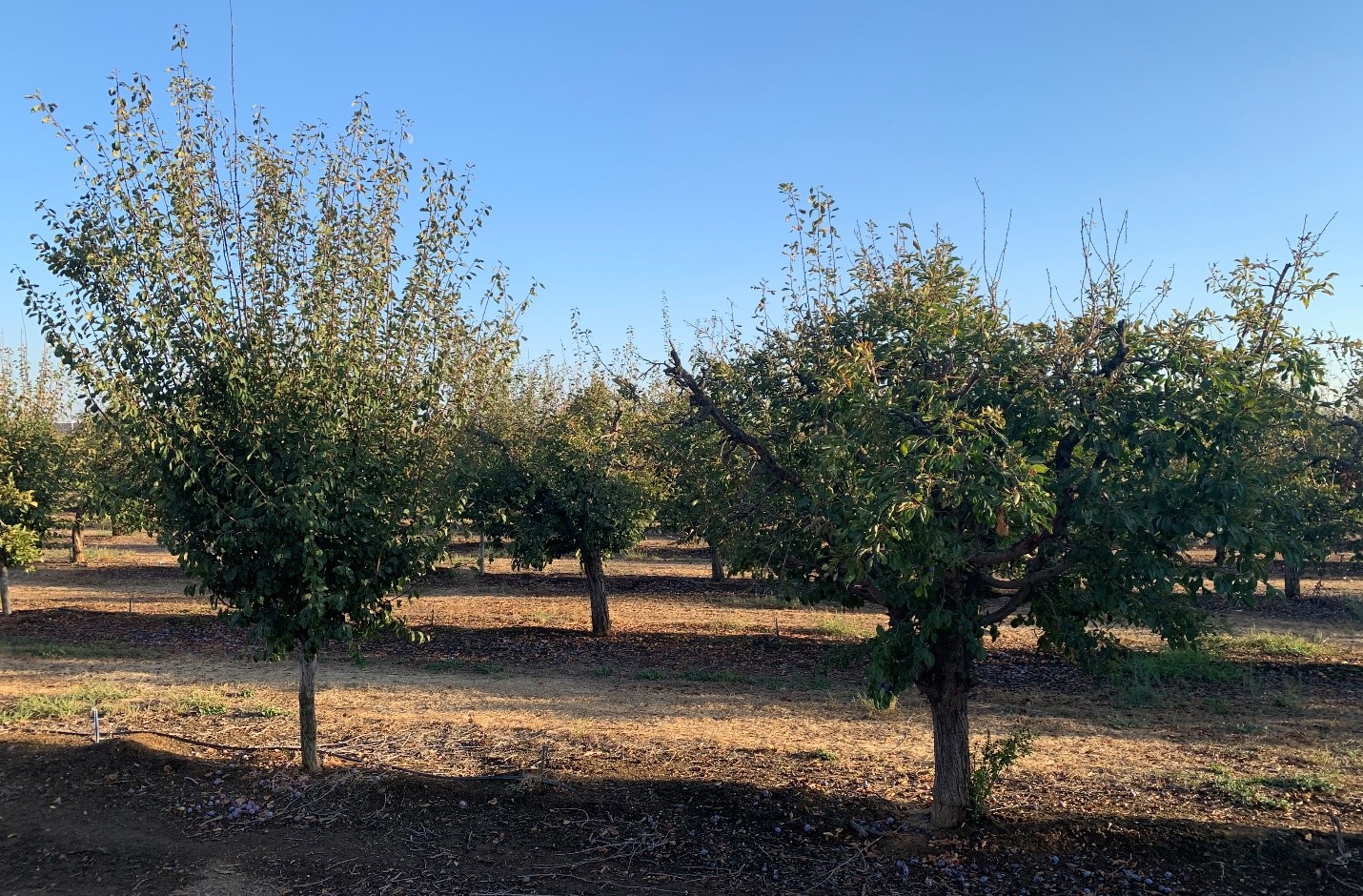Luke Milliron, UCCE Orchard Advisor Butte, Glenn, Tehama
Franz Niederholzer, UCCE Farm Advisor, Colusa, Sutter, and Yuba Counties
Your orchard is an investment – the longer it remains a productive, high-yielding orchard the higher your return on that investment and the longer you can avoid the (very expensive) need for orchard removal, replanting, and years of non-bearing and low initial yields.
Do you know what thiophanate-methyl is? It is the active ingredient in the fungicide Topsin-M®. While this is not a pesticide advertisement or recommendation, research from the lab of Dr. Themis Michailides (UC Davis, based at Kearney Ag Research & Extension Center) has shown that Topsin-M® is the most consistently effective fungicide for protecting fresh pruning wounds. Pruning wounds are very easily colonized by canker causing fungi (Cytospora, Botryosphaeria, and others). These fungi infect the fresh pruning cut with wind splashed spores during rainstorms.
So, all you must do is prune, quickly clear the brush, and apply Topsin-M® or another thiophanate-methyl product? Unfortunately, it’s not quite that simple. Although this fungicide is the best protective spray we have to-date, it significantly reduces but does not prevent all canker infections that can shorten your orchard’s lifespan. Still, to give your orchard the best shot at long sustained health and financial viability -integrate this spray in with other best practices:
- Skip pruning when you can (following a heavy crop, the year after detailed pruning, etc.), but make sure to shaker thin if a heavy crop sets because limb breakage is also an opportunity for canker infection.
- Prune around rain whenever possible. Early fall or after bloom are pruning timing options that may (should?) avoid rain. Never prune with rain in the forecast.
- Quickly push brush and consider spraying with a thiophanate-methyl product (Topsin®-M, etc.).
- Prune out and remove dead wood in the orchard to reduce canker inoculum. Burn pruning debris where permitted.

Photo contrasting tree age and health: Young, healthy tree (left) and canker damaged tree (right). To reduce chances of the left tree looking like the right tree in the future, protect pruning wounds with a thiophanate-methyl (Topsin®-M, etc.) fungicide as soon as possible after pruning and before rain (photo by Franz Niederholzer).
*Note, Mention of any chemistries or trade names does not constitute a recommendation and are for informational purposes only. Always consult with your PCA before use and adhere to the pesticide label and local and state regulations.


Leave a Reply